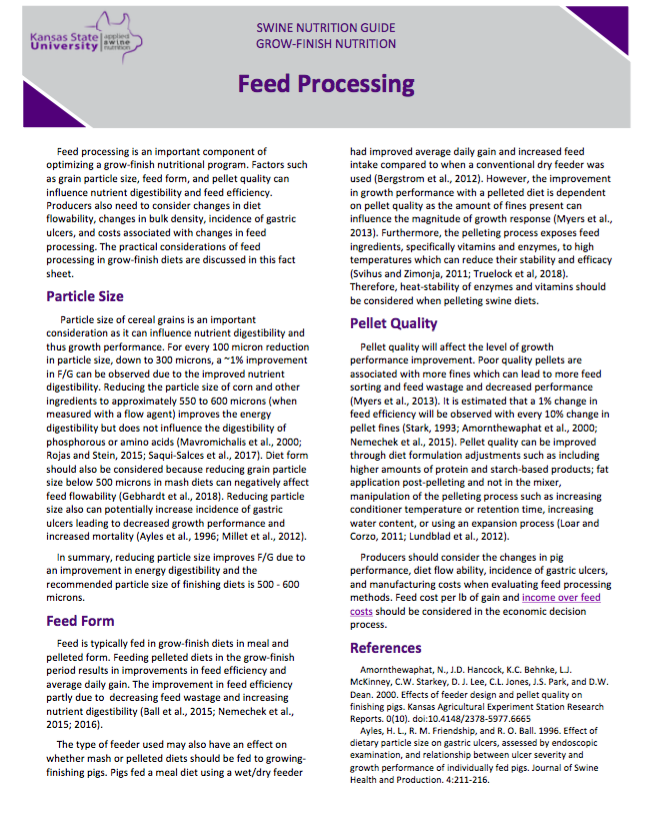Feed Form
Feed is typically fed in grow-finish diets in meal and pelleted form. Feeding pelleted diets in the grow-finish period results in improvements in feed efficiency and average daily gain. The improvement in feed efficiency partly due to decreasing feed wastage and increasing nutrient digestibility (Ball et al., 2015; Nemechek et al., 2015; 2016).
The type of feeder used may also have an effect on whether mash or pelleted diets should be fed to growing-finishing pigs. Pigs fed a meal diet using a wet/dry feederhad improved average daily gain and increased feed intake compared to when a conventional dry feeder was used (Bergstrom et al., 2012). However, the improvement in growth performance with a pelleted diet is dependent on pellet quality as the amount of fines present can influence the magnitude of growth response (Myers et al., 2013). Furthermore, the pelleting process exposes feed ingredients, specifically vitamins and enzymes, to high temperatures which can reduce their stability and efficacy (Svihus and Zimonja, 2011; Truelock et al, 2018). Therefore, heat-stability of enzymes and vitamins should be considered when pelleting swine diets.
